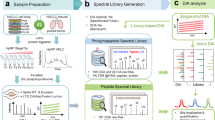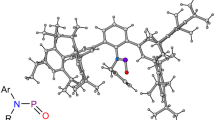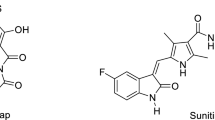Abstract
THE importance of oxidative phosphorylation in the respiratory chain of living organisms has led to intensive research into the possible in vivo and in vitro mechanisms of phosphorylation1, and several theories have been advanced which postulate quinol phosphates2–4 (or analogous nitrogenous systems derived from riboflavin5,6) as the active intermediates in phosphate transfer.
This is a preview of subscription content, access via your institution
Access options
Subscribe to this journal
Receive 51 print issues and online access
$199.00 per year
only $3.90 per issue
Buy this article
- Purchase on SpringerLink
- Instant access to full article PDF
Prices may be subject to local taxes which are calculated during checkout
Similar content being viewed by others
References
Slater, E. C., Rev. Pure and App. Chem. (Australia), 8, 221 (1958).
Wessels, J. S. C., Rec. trav. chim. Pays-Bas, 73, 529 (1954).
Harrison, K., Nature, 181, 1131 (1958).
Clark, V. M., Kirby, G. W., and Todd, Sir Alexander, Nature, 181, 1650 (1958).
Glahn, P. E., and Nielsen, S. O., Nature, 183, 1578 (1959).
Grabe, B., Arkiv för Kemi, 15, 323 (1960).
Hall, R. H., and Khorana, H. G., J. Amer. Chem. Soc., 77, 5057 (1956).
Author information
Authors and Affiliations
Rights and permissions
About this article
Cite this article
CLARK, V., HUTCHINSON, D. & TODD, A. Oxidative Phosphorylation: Synthesis of Adenosine Diphosphate by the Oxidation of Quinol Phosphates. Nature 187, 59 (1960). https://doi.org/10.1038/187059a0
Issue date:
DOI: https://doi.org/10.1038/187059a0



